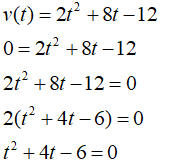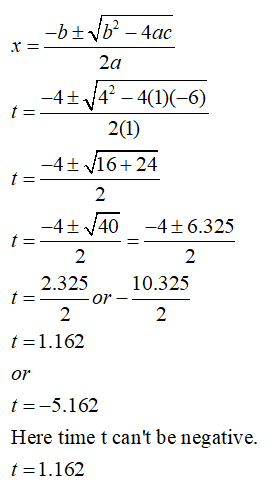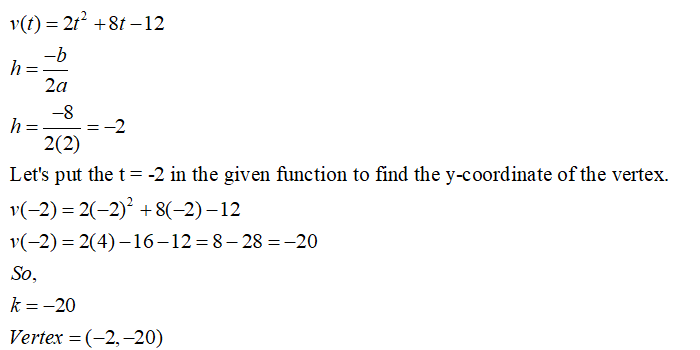Suppose the velocity of an object is given by the following formula: v(t) = 2(t^2) +8t -12 When will the velocities reach 0? Over what intervals will the velocity be negative? Over what intervals will the velocity be positive?
Suppose the velocity of an object is given by the following formula:
v(t) = 2(t^2) +8t -12
When will the velocities reach 0? Over what intervals will the velocity be negative? Over what intervals will the velocity be positive?
To determine: Velocity of an object is given by the following formula:

When will the velocities reach 0?
Over what intervals will the velocity be negative?
Over what intervals will the velocity be positive?
a) When will the velocities reach 0?
We need to find the time when velocity will be 0.
So, we put v(t) = 0 in the given function.

Now we use quadratic formula to solve this equation.

At time t = 1.162 velocity is 0.
Now we graph this velocity function.
horizontal intercepts are:
t = 1.162
t = -5.162
Now we find the vertex (h,k) of this parabola.

Step by step
Solved in 5 steps with 7 images









